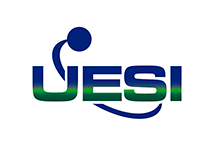When municipalities, developers, or environmental NGOs in Biloxi invest in artificial reef construction services, the goal is clear: to enhance marine habitats, strengthen coastal protection, and support fisheries. However, successful reef projects require more than good intentions. They involve overcoming technical, ecological, and regulatory challenges. This article outlines the main risks tied to eco reef building solutions, underwater habitat restoration, and marine biodiversity support structures—and explains how partnering with Underwater Engineering Services Inc (UESI) helps manage them effectively.
1. Geotechnical Stability
A key risk in artificial reef construction is the stability of the seafloor substrate. Biloxi’s coastal area often presents soft sediments and strong tidal currents that can shift over time. Without proper site analysis, installed reef modules may tilt, settle unevenly, or become buried, damaging nearby marine environments. Detailed geotechnical surveys and sediment transport modeling are critical to ensure that marine biodiversity support structures stay secure and effective. Ignoring this phase can result in costly failures and reduced ecological impact.
3. Ecological Design
A common cause of reef underperformance is ecological incompatibility. If the artificial structure does not match local habitats, the targeted marine species may not colonize, or invasive species may take over. Inadequate hydrodynamic design can also lead to stagnant areas, poor circulation, or shading that limits growth. Effective eco reef building solutions must replicate natural habitats while promoting healthy water flow. Ecological design that integrates biology with engineering is crucial for creating reefs that genuinely support biodiversity.
4. Deployment Hazards
The installation process poses significant operational and safety challenges. Placing heavy concrete or steel reef modules requires precision equipment, weather coordination, and skilled divers. In Biloxi, tides, storms, or equipment malfunctions can easily disrupt the deployment schedule. Diver safety is also a critical factor—currents, limited visibility, and entanglement hazards make the work demanding. Even a well-designed reef can fail if mishandled during deployment. Choosing a contractor with strong safety programs and precise logistical control minimizes these risks.
5. Maintenance Challenges
A widespread misconception is that reefs are permanent and self-sustaining. In reality, long-term maintenance determines their success. Corrosion, sedimentation, or shifting modules can weaken the structure and reduce its ecological function. Without monitoring and periodic restoration, these problems escalate over time. A solid maintenance plan—including inspection intervals, biological assessments, and adaptive management—is essential for preserving both the structure and marine life. Neglecting maintenance can undermine the full investment in artificial reef construction services.
6. Environmental Side Effects
Even well-designed projects can have unintended environmental impacts if not properly managed. Poor material selection or deployment can generate sediment plumes that bury nearby seagrass beds or oyster reefs. Ignoring baseline ecological data might disturb breeding grounds or alter water currents, leading to shoreline erosion. To minimize such risks, thorough environmental assessments, real-time turbidity monitoring, and the use of inert, eco-friendly materials are vital. These precautions ensure that underwater habitat restoration enhances, rather than harms, local ecosystems.
Best Practices for Risk Mitigation
Managing these challenges requires strong project management strategies. Effective reef developers in Biloxi should:
- Conduct integrated geotechnical, hydrodynamic, and ecological studies.
- Incorporate regulatory planning early in design stages.
- Create eco reef building solutions adapted to local species and current patterns.
- Schedule deployments during stable weather conditions.
- Enforce rigorous safety and quality control programs.
- Establish budgets for ongoing monitoring and maintenance.
These best practices help ensure reef systems perform as expected and provide lasting ecological and economic value.
UESI’s Expertise in Reef Construction
Selecting an experienced partner like Underwater Engineering Services Inc (UESI) significantly reduces project risk. With over 39 years of experience in underwater construction, commercial diving, inspection, and engineering, UESI integrates technical precision with environmental understanding. Their approach combines certified divers, topside crews, and engineers under strict safety and quality systems, delivering efficient and compliant results for complex marine environments.
UESI’s versatility across civil and marine projects gives them an advantage in marine biodiversity support structures. Their consistent track record in underwater inspection and project management fosters trust among clients and regulatory bodies. Partnering with UESI ensures access to advanced underwater technologies, strategic risk control, and a proven framework for sustainable reef projects.
Facing Risks Related to Artificial Reef Construction Services in Biloxi
Biloxi’s coastline holds great potential for environmental and recreational improvement through artificial reef construction services. Yet the benefits depend on managing risks such as unstable substrates, poor design, or inadequate maintenance. Success demands careful planning, ecological understanding, and professional execution.Choosing a partner like Underwater Engineering Services Inc, known for excellence in eco reef building solutions, can transform these risks into long-term opportunities. With disciplined engineering and risk-aware management, Biloxi’s artificial reefs can flourish—offering durable habitats, stronger shorelines, and thriving marine ecosystems that benefit generations to come.




